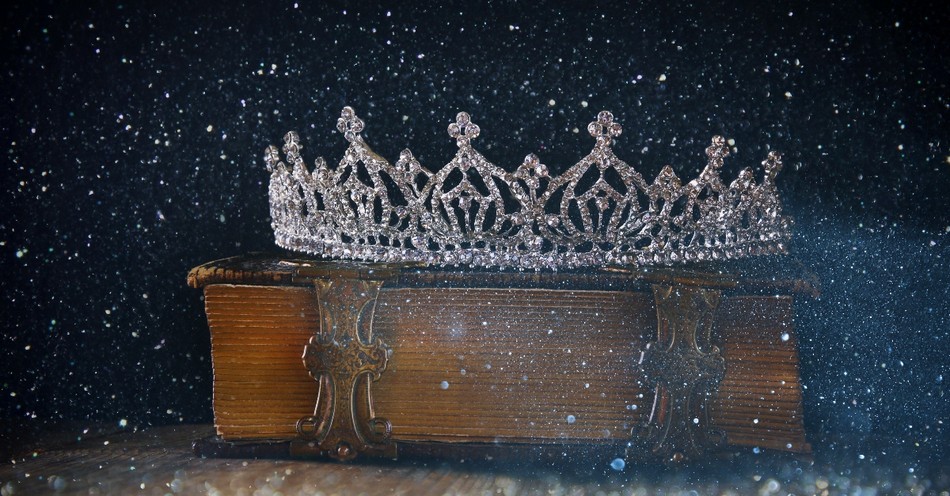Esther chapter 4 is where Mordecai finds out that his refusal to bow down to Haman has become Haman’s excuse to exterminate the Jews. “When Mordecai learned all that had been done, Mordecai tore his clothes and put on sackcloth and ashes” (4:1). This was the most appropriate response to what he had learned, but why? Why did Mordecai put on sackcloth and ashes?
What Is the Significance of Sackcloth and Ashes?
“Sackcloth is a coarse, loose burlap-like cloth, often made of black goat’s hair,” explained Seth L. Scott in an article about this topic. Ash “could be literal ash from burned material or dust from the ground” and one placed it on his or her own head.
We have seen this sort of thing before in Scripture, such as when Jacob was told that Joseph had been devoured by a wild animal (Genesis 37). We see David and the elders clothed in sackcloth after David’s census incurred the Lord’s wrath.
“The people of Israel were assembled with fasting and sackcloth, and with earth on their heads,” in Nehemiah 9:1. They went into mourning over their personal and corporate sins. Deep repentance led them to this extremely humble position before God.
Scott wrote that “the discomfort of the clothing served as a physical manifestation of the discomfort of loss or repentance.”
As for the earth or ash on their heads, this was a reminder that God’s people came from the earth. They were as dust in the Lord’s hands when he formed them and breathed life into them.
He could have returned his people to this state at the end of their mortal lives but instead had chosen to redeem them. Wearing sackcloth and ashes is a symbol of repentance, mourning, or humbling oneself in prayer as a way to acknowledge one’s total reliance upon God.
Did Esther Get It?
I wonder why Esther offered Mordecai new clothes to put on in place of his goat-hair sackcloth. I try to put myself in her shoes: she had been sheltered from the real world, and since it was a secret that she was one of the Jews, Esther had no access to religious support.
Her faith, her God, might not have seemed real to her anymore. Mordecai had raised her to fear and love the Lord, but because of the secrecy, they maintained, how much could they have shared about the Lord in their short visits at the gate?
A friend of mine who has been studying the Book of Esther said she believes this biblical heroine was so closeted from the real world that she might not have even heard what was happening on the outside.
Perhaps she still believed in the Lord Almighty and worshiped him in secret but was simply unaware of what reality looked like for the average person.
It says in Esther 4:3-4 that when they saw the “great mourning among the Jews, with fasting and weeping and lamenting, and many of them lay in sackcloth and ashes,” “Esther’s young women and her eunuchs came and told her.”
When word reached her, Esther “was deeply distressed.” The edict was news to Esther up to this point, or else she hadn’t believed Haman could get away with something so heinous. Sackcloth and ashes demonstrated the seriousness of their situation and confirmed the worst.
Perhaps Esther couldn’t handle it. She might have thought “there’s nothing they can do. Why be uncomfortable as they await their fate?”
Then she tried to give Mordecai those nice clothes. Perhaps Esther felt people we often meet in times of distress, who see us in tears and say, “Don’t cry, everything’s okay.” But it’s not okay.
So much grief for a young woman unaccustomed to raw displays of emotion, separated from life among the faithful, might have overwhelmed her.
And meanwhile, Esther might have forgotten the value and importance of humble prayer, even the gravity of her own situation. After all, from within the palace walls, she was sheltered from real life although she undoubtedly experienced pain and trouble too.
Esther’s Response and Our Response
Instead of wearing sackcloth and ashes, Esther and her servant-women fasted for three days. They responded by getting a little bit uncomfortable, humbling their bodies, and coming together in prayer.
When we learn of world events such as the imprisonment of thousands of Uyghurs in Northern China, Russia’s war against Ukraine, or a school shooting, what is our response? What should our response be? So often, there is a call to pray, and this is such a moving, powerful thing to do.
It’s a peaceful response to violence and it’s an act, which reminds oppressors that they cannot steal a person from their Savior; there are some things an oppressor can take, but not salvation. Not the Holy Spirit. Not immediate access to Jesus, anytime, anywhere.
Many readers can relate to Mordecai. I’m so sorry, I wish there was some way to erase your pain on this side of heaven. There are also lots of “Esthers” interceding for other people, for God’s glory, but we don’t always hear about them. Often, they are imprisoned or killed for trying to rescue people from injustice.
And their work does not necessarily result in freedom for slaves or the end of violence. Deitrich Bonhoeffer’s stand against the apathy of Christians and against the Nazis did not bring an end to the Holocaust or save his own earthly life.
But what a testimony to the power of the Holy Spirit, to the ability for one to trust God the way Moses did and go to “Pharaoh” or führer with demands from the Lord himself, believing, as Jesus did, in resurrection life.
I aspire to that sort of faith and wonder if I would hold my ground in a similar situation. I often imagine “could I do what Esther did? Or what Bonhoeffer did?”
The Bible says that at such a time, the Holy Spirit “will teach you what you should say” (Luke 12:12). The Holy Spirit will even teach us what to pray for if we ask and listen.
Prayer Is Plan A
Most of us won’t evangelize countless individuals at huge rallies; secretly deliver thousands of Bibles all across the Middle East; expose and destroy sex trafficking rings, or travel cross-country to share the gospel with strangers. But we can all pray.
Esther’s prayers didn’t save the Jews — God did that — but they acted as a reminder to submit to the Lord’s power and goodness and to trust him; a reminder that we can approach him any time.
Our biggest woes and most powerful enemies are smaller than him and their power is tiny compared to his power. Prayer is our biggest weapon in the fight against evil, it’s not plan B. Prayer is plan A.
Jesus prayed to the Lord often, he prayed in the morning, and he made prayer a priority. He prayed before addressing the crowds.
He prayed for his enemies from the cross too, and that’s been one of the most powerful testimonies of his ministry. “Father, forgive them, for they know not what they do” (Luke 23:34).
Even if the world’s evils deprive a person of safety, nourishment, or earthly life, the devil cannot enslave the spirit which has chosen Christ as Master, and prayer to Jesus is his or her foremost weapon against Satan.
But our prayer is usually comfortable. It’s something we like to do in our own time, in our own way. We don’t usually fast, and Christians rarely wear sackcloth or ashes. Should our prayer be more like Esther’s at least — hungry and intense?
The Reality of Esther
Esther couldn’t leave the palace, but she knew that the situation was dire. A terrible dilemma called for a big response, bigger than usual: corporate fasting and prayer. The world is crazy. There is so much pain and chaos that prayer has to be both personal and corporate.
If you’re like me, this isn’t what you want to hear. Humble, corporate prayer in the vein of 2 Chronicles 7:14 is going to be uncomfortable but being humble means remembering our position before the Lord: that he is lifted high, Sovereign over all, not a buddy but our One, True, Powerful King.
For further reading:
Esther's First Connection to the Gospel
Esther's Second Connection to the Gospel
Esther's Third Connection to the Gospel
Esther's Fourth Connection to the Gospel
Photo Credit: ©iStock/Getty Images Plus/tomertu





.jpg)